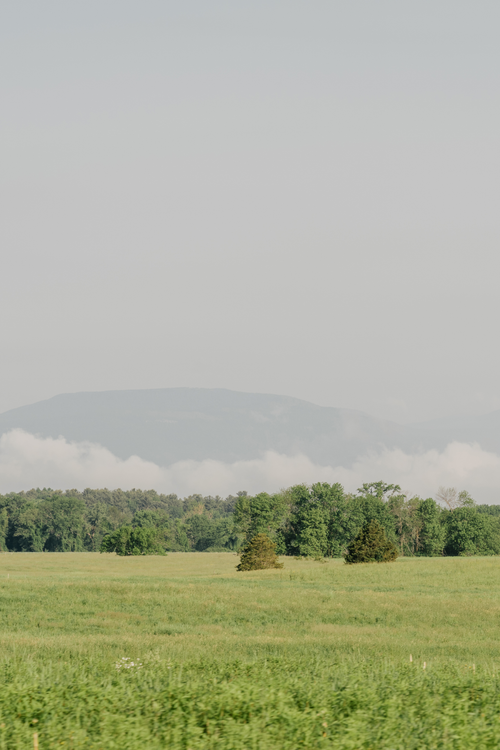By Treaty.
Imagine the purples and golds of an overgrown field in New York’s Columbia County. Walk along a fall field overgrown with aster and goldenrod. A few last Monarchs weave in and out of the thorn bushes. Feel the softness of the ground beneath your feet, the places where the rain has begun to transform fallen leaves into mulch. Let your mind wander as you walk. Breathe in deeply the perfume of a landscape tipping into a new season. Wet stone. Leaf rot. Sunshine on crumbling goldenrod stalks. Then. Pause. Look down at your hands.
Are they covered in flakes of seed and milkweed silk? I imagine, as you walked, your fingers skimmed the surface of the field, your fingers pinched at dried flowers, and that you scattered pollen and spores and seeds unintentionally. Just like a bee, when you wander without aim in nature, when you let your instincts guide your hands and your feet. You enter back into that sacred relationship with the land that has always existed.
Treaty, based on the land of the Mahicans in Hudson, NY is dedicated to the relationship between people and the land: both how it has been broken and how it can be healed. From Soil to Spirit. From Spirit to Soil. Our Treaty is connective tissue: not an object, but a relationship between beings. Today, looking out on the fields that grow the plants that make our medicine, we are reminded that a treaty doesn’t just acknowledge interdependence. It is interdependence. Our relationship with the land isn’t learned, it is remembered. It lives in our hands that unconsciously pluck and scatter seeds as we walk across a field. Humans have settled in the Hudson Valley for around 13,000 years. That’s well over 500 generations of people that have lived in this landscape: growing and harvesting food and medicine while also regenerating the health of the soil and the forests.
The Mahicans, the Lenape, and the other indigenous people of the Hudson Valley farmed this land. The soil hereat Hudson Hemp, narrates a story of people who evolved with their environment by paying attention to the land’s resources. . People who honored the floodplains of the river, planting in the fertile soil near the shore, practicing crop rotation working with the rhythm of fields that generously nurture crops that then lie fallow; and cultivated with “trap plants” that protected their prized corn, beans, and squash from pests. The indigenous people of the Hudson Valley entered into a relationship with a specific plant by agreeing to help it grow.
This type of farming is a conversation. As plants heal and nourish us, we must nourish them in return. This relationship – this treaty – is a form of dynamic balance. When we taste the plants that have grown on this land, we are participating in an ancient contract: I take care of you, you take care of me.
